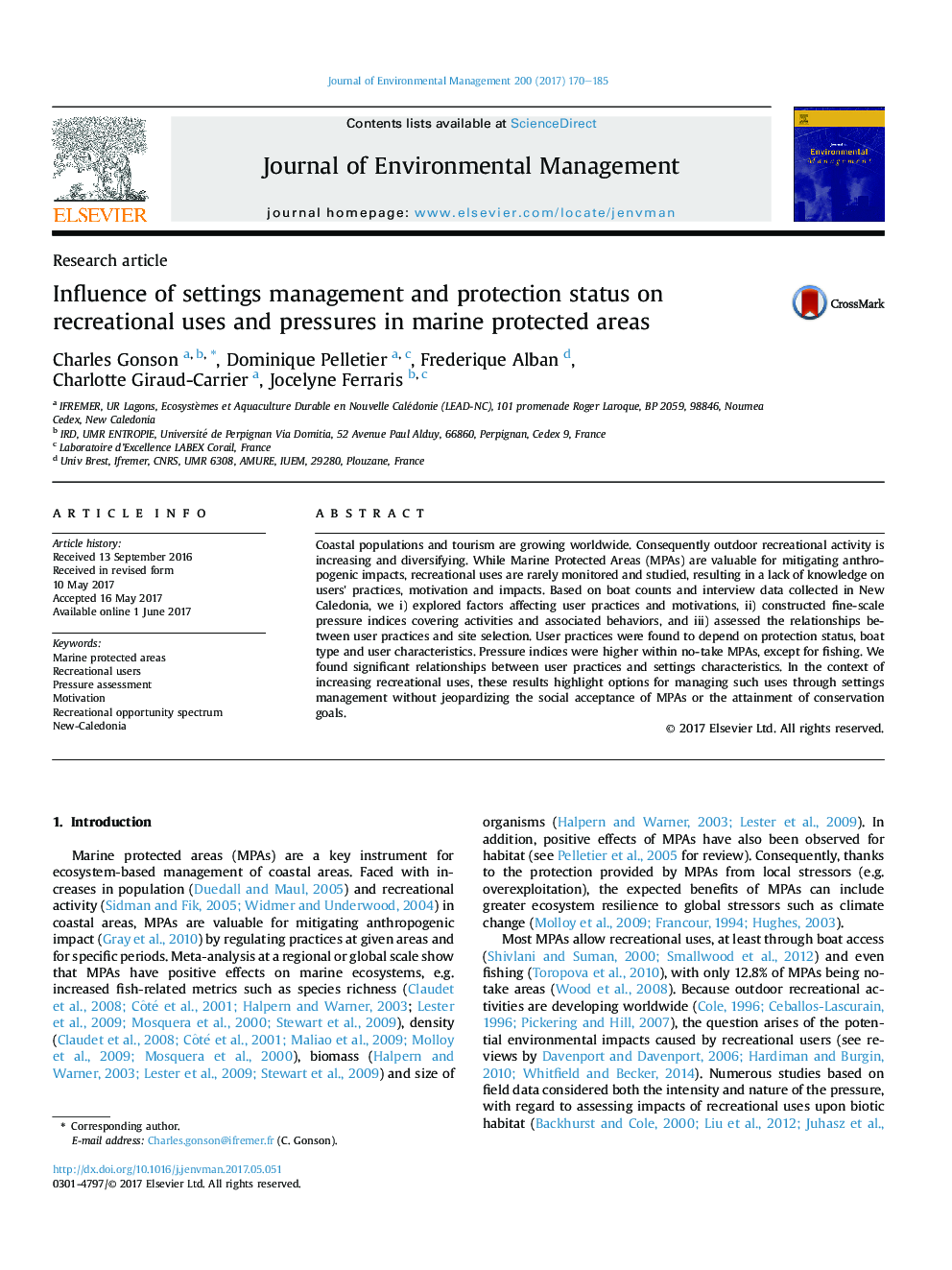| Article ID | Journal | Published Year | Pages | File Type |
|---|---|---|---|---|
| 5116328 | Journal of Environmental Management | 2017 | 16 Pages |
â¢Recreational users count and survey data were collected on same sites.â¢Practices and site selection criteria depend on protection status and boat type.â¢Marine Protected Areas concentrate most of recreational users' pressures.â¢Site selection depends on settings conditions and intended practices.â¢Site selection depends on managerial conditions and accessibility.
Coastal populations and tourism are growing worldwide. Consequently outdoor recreational activity is increasing and diversifying. While Marine Protected Areas (MPAs) are valuable for mitigating anthropogenic impacts, recreational uses are rarely monitored and studied, resulting in a lack of knowledge on users' practices, motivation and impacts. Based on boat counts and interview data collected in New Caledonia, we i) explored factors affecting user practices and motivations, ii) constructed fine-scale pressure indices covering activities and associated behaviors, and iii) assessed the relationships between user practices and site selection. User practices were found to depend on protection status, boat type and user characteristics. Pressure indices were higher within no-take MPAs, except for fishing. We found significant relationships between user practices and settings characteristics. In the context of increasing recreational uses, these results highlight options for managing such uses through settings management without jeopardizing the social acceptance of MPAs or the attainment of conservation goals.
